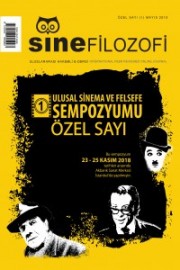Vilém Flusser’in Soyutlama Modeli ve Sinematografik İmge
Vilém Flusser’s Abstraction Model and Cinematographic Image
Author(s): Çağrı KaraSubject(s): Contemporary Philosophy, Evaluation research, Film / Cinema / Cinematography
Published by: Serdar Öztürk
Keywords: Vilém Flusser; the movement-image; the time-image; crisis of representation; abstraction; Gilles Deleuze; Henri Bergson; cinematographic image;
Summary/Abstract: Vilém Flusser suggested a five-step model that grasps the process of cultural history as an alienation from the concrete to the abstract: 1) Concrete experience of four-dimensional space-time continuum, 2) three-dimensional situation comprising graspable objects, 3) two-dimensional observation and imagination level characterized by traditional images 4) one-dimensional historical level characterized by linear text and 5) dimensionless calculation and computation level characterized by technical images. Technical images and traditional images arise from completely different kinds of distancing from concrete experience. The ‘realism’ of technical images is misleading depending on the intentions of the producers of technical images. Traditional images are abstractions of world, but technical images makes the universe and consciousness concrete. If we based on Flusser’s model, since the cinematographic image make four dimensions concrete, it is the phenomenological complement of the concretisation process. This makes it one of the most competent medium as a way of thinking, beyond language. When Deleuze’s image taxonomy and the media theory of Flusser are read together, the possibilities of cinematographic image as an out-of-language thinking way are becoming more conceivable.
Journal: SineFilozofi
- Issue Year: 4/2019
- Issue No: Sp. Iss
- Page Range: 221-240
- Page Count: 20
- Language: Turkish

